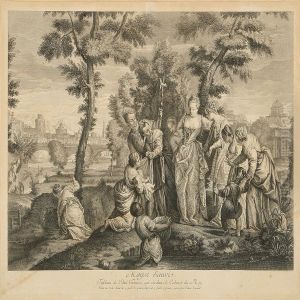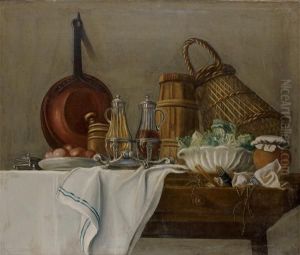Edme Jeaurat Paintings
Edme Jeaurat was a French engraver and draughtsman born in 1688 in Vermenton, a small town in the Burgundy region of France. He was the brother of the astronomer Etienne Jeaurat and uncle to the painter Etienne Jeaurat, who became quite prominent. Edme Jeaurat's career unfolded during the reign of Louis XIV and extended into the Regency period following the king's death.
Initially, Jeaurat was trained by his father, who was also an artist, and later he moved to Paris to further his education and career in art. In Paris, he studied under the tutelage of Bernard Picart, a renowned engraver of the time. Under Picart's guidance, Jeaurat honed his skills and became adept at both line engraving and etching, two dominant printmaking techniques of the era.
Jeaurat's work was characterized by its fine detail and the clarity of his line work, which earned him a reputation as a skilled engraver. He produced a variety of works, including religious subjects, portraits, and genre scenes. His engravings were used to illustrate books and were also sold as separate prints, which was a common practice at the time for disseminating artworks to a broader audience.
Throughout his career, Jeaurat collaborated with other artists and engravers, contributing to the proliferation of visual culture in France during the early 18th century. His engravings were highly sought after, and he became a member of the prestigious Académie Royale de Peinture et de Sculpture in 1722, which further solidified his status as an accomplished artist.
Jeaurat's success as an engraver allowed him to provide for his family, and his legacy continued through his nephew, who became a noted painter. Edme Jeaurat's engravings remain a testament to the skills and techniques of early 18th-century French printmaking. He passed away in 1738, leaving behind a body of work that continues to be studied and appreciated by art historians and collectors today.

